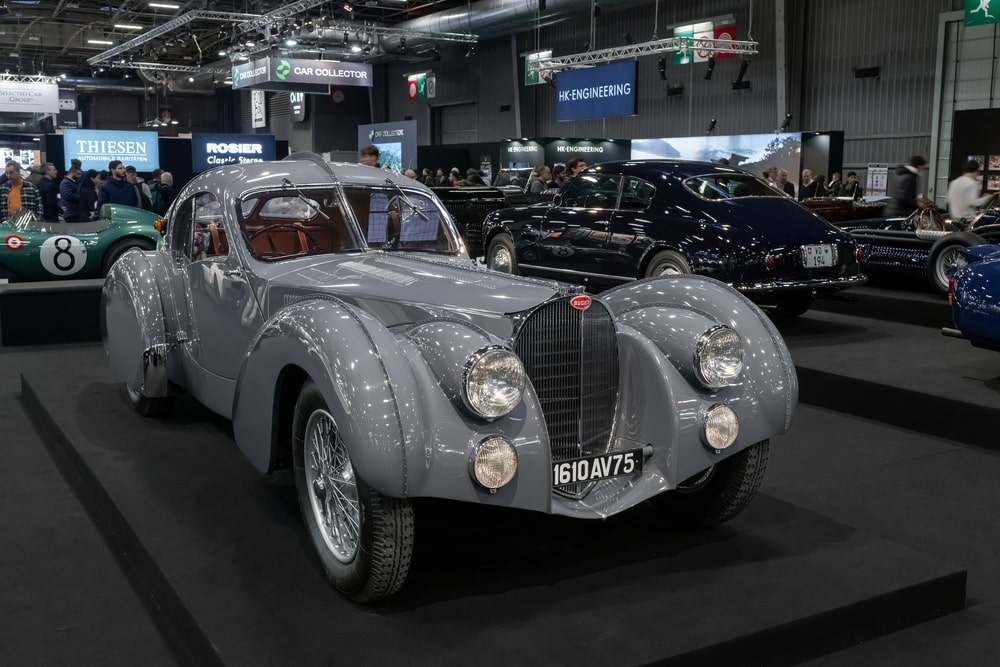Rare car auctions are more than just places where collectors spend millions of dollars to own legendary vehicles. They are grand spectacles where each car has a unique history, and prices sometimes reach astronomical levels. In this article, we will explore some of the most exciting automotive auctions, record-breaking sales, and surprising discoveries.
Mercedes-Benz 300 SLR Uhlenhaut Coupe
The Auction That Shook the World: Mercedes-Benz 300 SLR Uhlenhaut Coupe Sold for $143 MillionIn May 2022, the auction house RM Sotheby’s conducted one of the most groundbreaking sales in automotive history. At a private auction, a Mercedes-Benz 300 SLR Uhlenhaut Coupe was sold for an astonishing $143 million, making it the most expensive car ever sold at auction.
This unique car was built in 1955, with only two units ever produced. Named after Rudolf Uhlenhaut, the chief engineer at Mercedes-Benz, the vehicle was based on the company’s racing technology but never competed in any races. Its standout feature was a 3.0-liter engine capable of reaching 290 km/h (180 mph), making it one of the fastest cars of its time.

The buyer remained anonymous, and a portion of the proceeds went toward educational initiatives focused on engineering and sustainable development. This auction set a new benchmark for the value of classic cars, proving that rare automobiles are not just luxury items but also cultural artifacts.
Ferrari 250 GTO – The Holy Grail of Car Collecting
One of the most famous and valuable classic cars in the world is the Ferrari 250 GTO. In 2018, one of the 36 existing units was sold at an RM Sotheby’s auction for $48.4 million, making it the most expensive Ferrari ever auctioned publicly.
This car was built in 1962 and participated in numerous legendary races, including the 24 Hours of Le Mans. The Ferrari 250 GTO is not only an engineering masterpiece but also a symbol of automotive prestige. Collectors worldwide dream of owning one, but with so few available, these sales are extremely rare.

The “Dream Garage” Discovery: A Forgotten Collection of Rare CarsSometimes, auctions feature cars that were long thought lost. One of the most remarkable cases occurred in France when a barn find revealed a collection of rare automobiles that had been untouched for over 50 years. Among the treasures was a 1961 Ferrari 250 GT SWB California Spider, which eventually sold for $18.5 million.
The garage belonged to collector Roger Baillon, who started acquiring rare cars in the 1960s. After his passing, the collection was forgotten, and the vehicles were left covered in dust. When the heirs decided to sell the cars, the auction house Artcurial organized the sale in Paris, drawing worldwide attention.
Bugatti Type 57SC Atlantic – The Car That No One Has Seen
The Bugatti Type 57SC Atlantic is one of the rarest and most mysterious cars in history. Only four units were ever produced, and one has disappeared without a trace. If it were ever found, its price could exceed $100 million.

One of the surviving Bugatti Type 57SC Atlantic models was sold to a private collector for approximately $40 million. Built in 1936, this vehicle is regarded as one of the most beautiful and technically advanced cars of its time.
Auction Records: The Most Expensive Cars Ever Sold. Here are some of the cars that have set auction records:
- Mercedes-Benz 300 SLR Uhlenhaut Coupe (1955) – $143 million (2022)
- Ferrari 250 GTO (1962) – $48.4 million (2018)
- Ferrari 335 S Spider Scaglietti (1957) – $35.7 million (2016)
- Bugatti Type 57SC Atlantic (1936) – $40 million (unofficial estimate)
- Aston Martin DBR1 (1956) – $22.5 million (2017)
Rare car auctions are not just transactions—they are historic events where passion, history, and immense wealth collide. Each sold vehicle carries a unique legacy, and some discoveries become global sensations. As time passes, the prices of these rare automobiles are expected to continue rising, with new records inevitably being set. If you ever attend one of these auctions, be prepared to witness not just cars, but true works of art whose value only increases over time.
